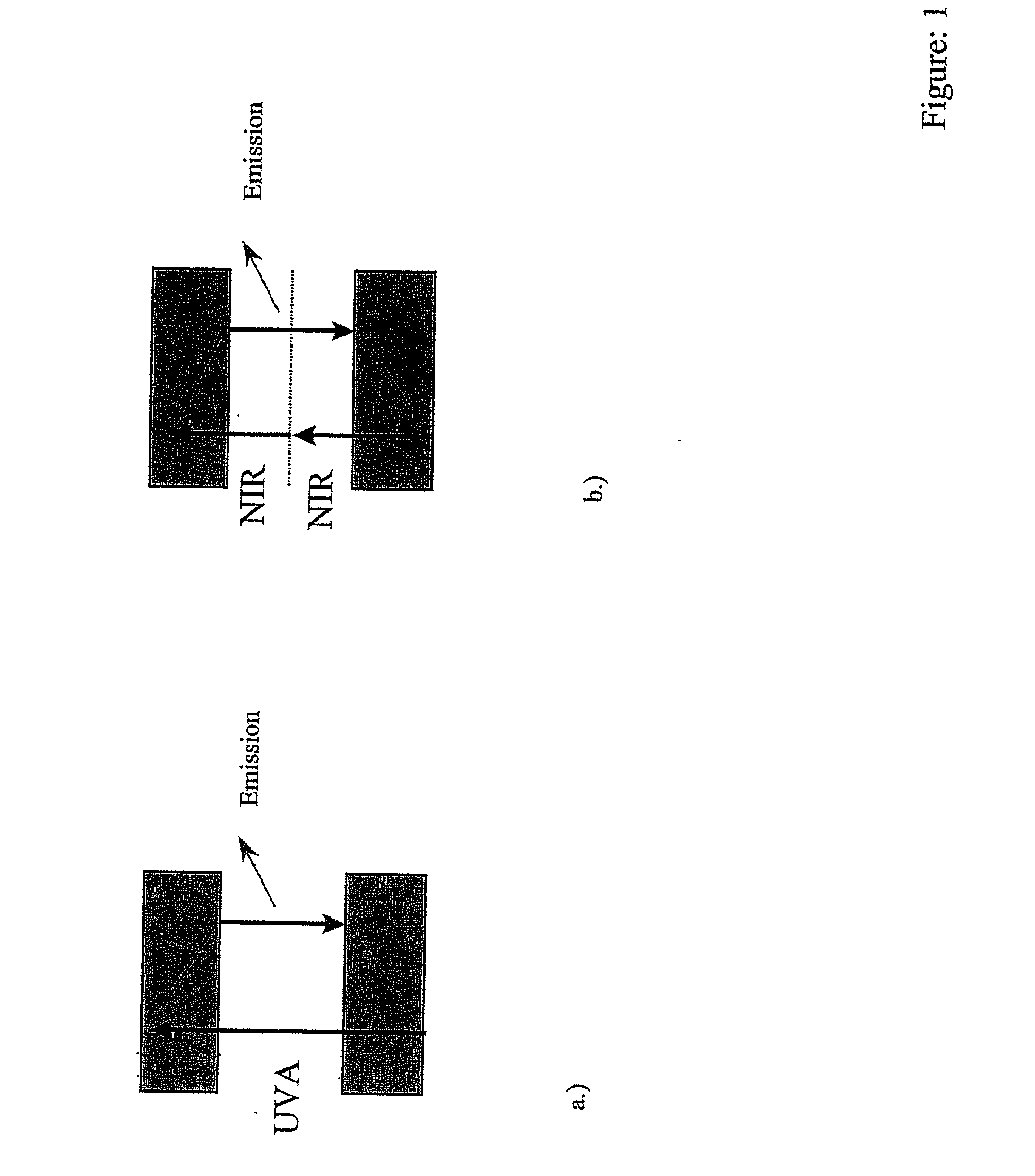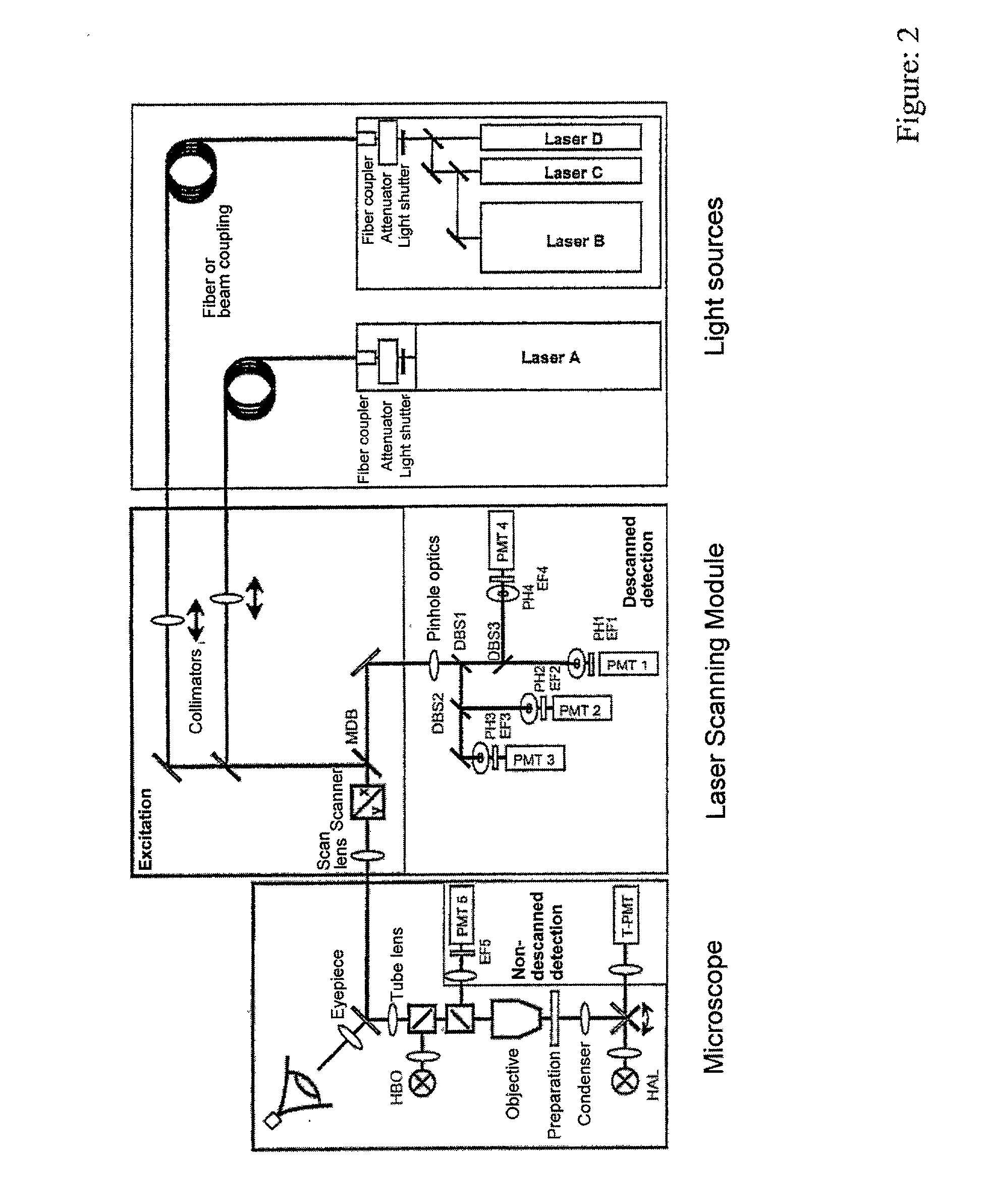Method for investigating a sample
a sample and sample technology, applied in the field of sampling methods, can solve the problems of difficult separation of emission signals with dbs, troublesome superposition of background signals, and unwanted effects in multifluorescence recordings, and achieve the effect of increasing the difficulty or sometimes even impossible of sampling
- Summary
- Abstract
- Description
- Claims
- Application Information
AI Technical Summary
Problems solved by technology
Method used
Image
Examples
Embodiment Construction
[0028] The background of the method according to the invention is a spectrally split detection of fluorescence. For this purpose, the emission light is split from the excitation light in the scan module or in the microscope (with multiphoton absorption) by means of an element for separating the excitation radiation from the detected radiation, such as the main color splitter (MDB) or an AOTF according to 7346DE or 7323DE. With transmitted-light arrangements, this type of element can also be entirely omitted. A block diagram of the detector unit to be described is shown in FIG. 5. With confocal detection, the light L from the specimen is focused through a diaphragm (pinhole) PH by means of imaging optics PO, so that fluorescence occurring outside of the focus is suppressed. In nondescanned detection, the diaphragm is omitted. The light is now divided into its spectral components by an angle-dispersive element DI. The angle-dispersive elements can be prisms, gratings and, e.g., acoust...
PUM
| Property | Measurement | Unit |
|---|---|---|
| wavelength | aaaaa | aaaaa |
| wavelength | aaaaa | aaaaa |
| wavelength range | aaaaa | aaaaa |
Abstract
Description
Claims
Application Information
 Login to View More
Login to View More - R&D
- Intellectual Property
- Life Sciences
- Materials
- Tech Scout
- Unparalleled Data Quality
- Higher Quality Content
- 60% Fewer Hallucinations
Browse by: Latest US Patents, China's latest patents, Technical Efficacy Thesaurus, Application Domain, Technology Topic, Popular Technical Reports.
© 2025 PatSnap. All rights reserved.Legal|Privacy policy|Modern Slavery Act Transparency Statement|Sitemap|About US| Contact US: help@patsnap.com



